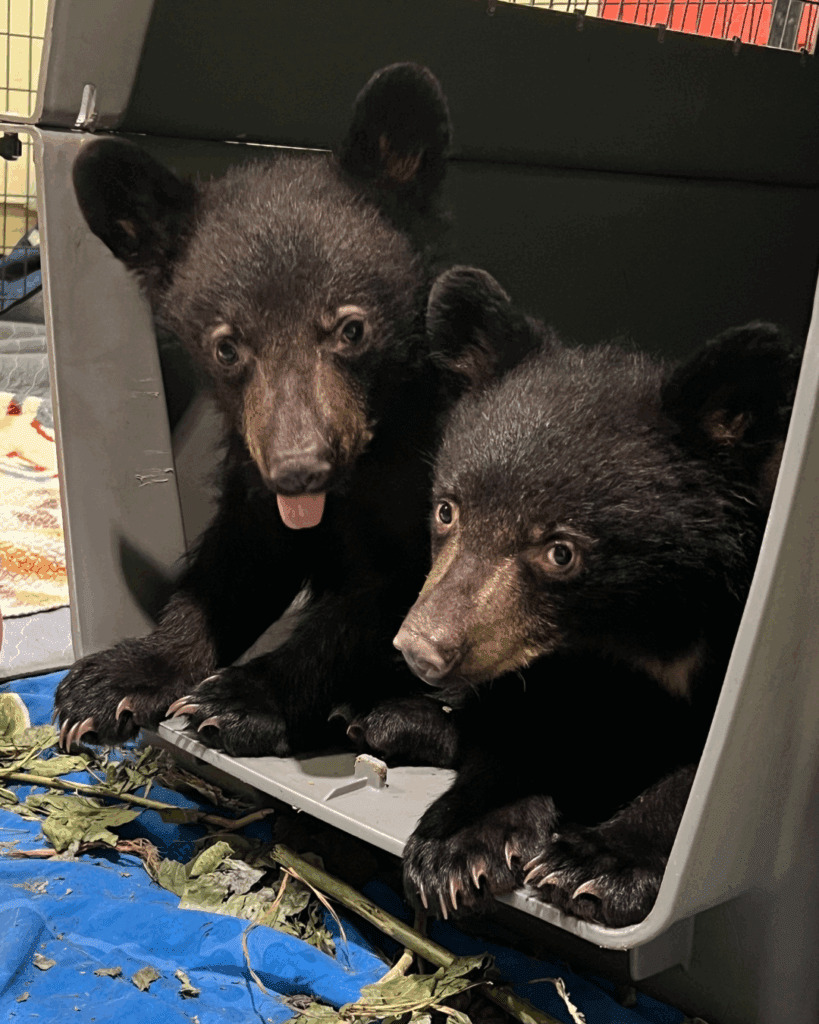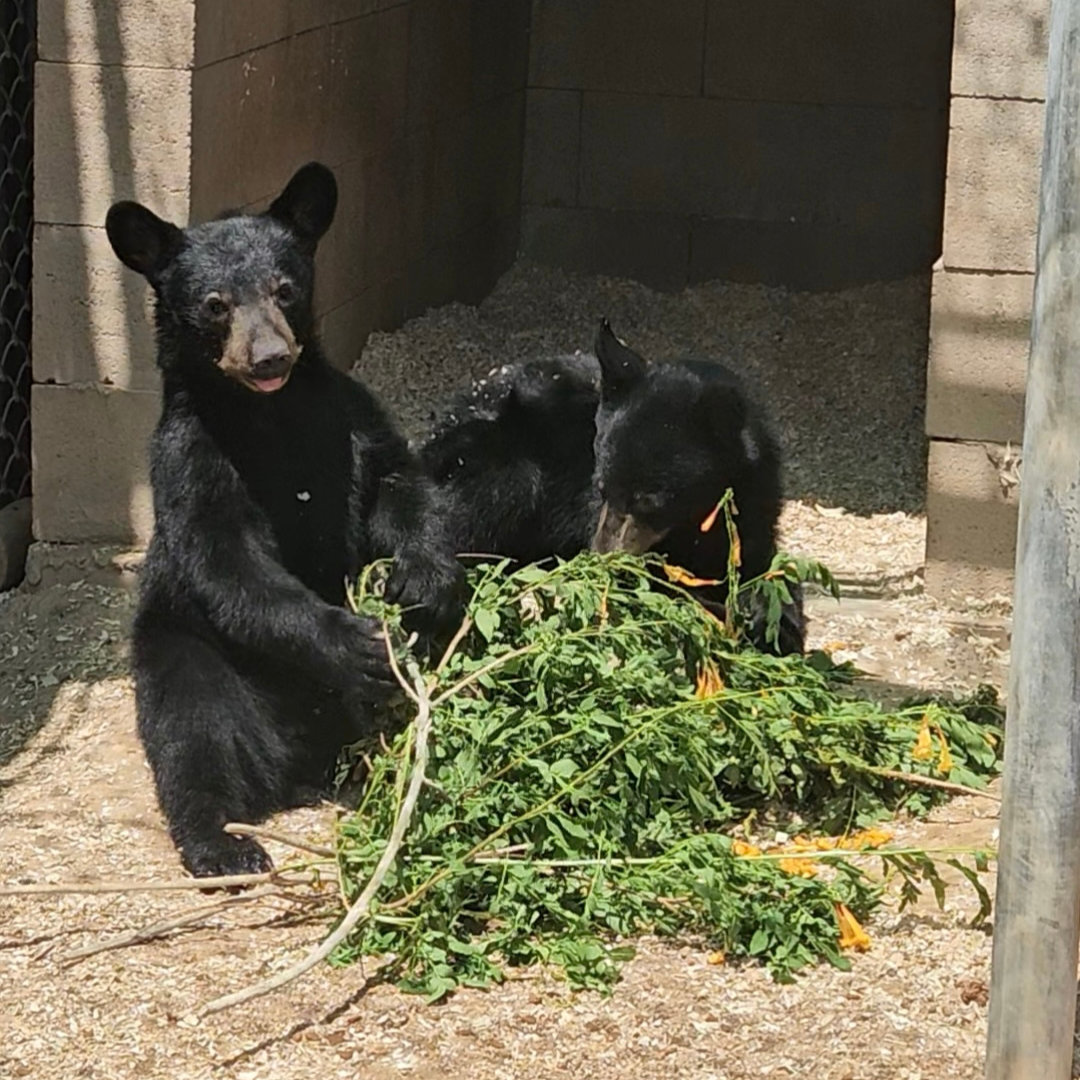
In April, we received an urgent call from the National Park Service about two bear cubs who had been wandering alone for days, near heavily trafficked campgrounds and hiking trails in the Chiricahua Mountains. At a few months old, baby bears depend entirely on their mother’s protection. She is their world, their safety, and their survival. Without her, they were defenseless against dangers they were never meant to face alone.
During a surveillance period, park officials observed the cubs crying for their mother from tree canopies, seeking water and shelter in park facilities, sleeping along trails, and growing visibly weaker as the days passed. Their rescue, carried out by Arizona Game & Fish and park staff, came just in time. When they arrived at Southwest Wildlife, they were in desperate need of help, sick with salmonella, and malnourished.
Currently, no other wildlife sanctuary in Arizona is equipped to rehabilitate and release bear cubs, making our involvement in their journey essential to their survival.
For the past 30 years, we have successfully rehabilitated and released many bear cubs, with our most recent releases taking place in 2022. Our goal is to provide these cubs with the same opportunity for a second chance at a wild life.
Raising bear cubs is both demanding and expensive. They require specialized diets, constant enrichment, modified enclosures, and intensive staff care. Most critically, we must keep them wild. Losing their fear of humans would be a death sentence, and we take the responsibility very seriously.
Their success once in the wild again is dependent on the care they receive during this critical time.
To reduce human contact, only specific staff members care for the cubs, feeding them three times daily while providing enrichment and medical attention. Direct interaction is limited and caretakers may even growl, clap, and make loud noises during their care, sending the message that “humans are scary.”
The hardest part of loving these cubs is teaching them not to love us back. While it may seem harsh, their fear of humans is essential for their wild future.
The most touching detail: our veterinary staff observed the cubs carrying their large stuffed “Mama Bear” to their food and water bowls and snuggling with the stuffed bear, a heartbreaking reminder of what they have lost.
The bears are now living in a specially constructed outdoor enclosure designed to mimic their natural habitat while minimizing human contact, another important step toward life in the wild.

May 2025
